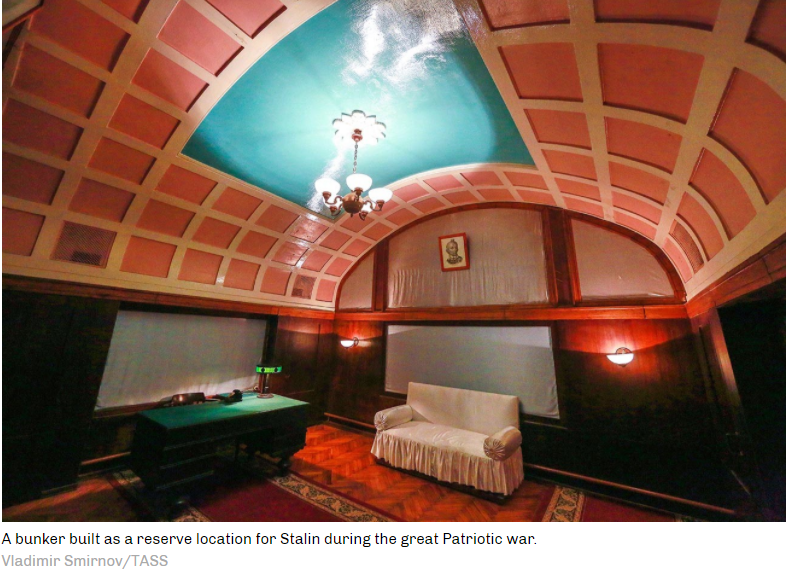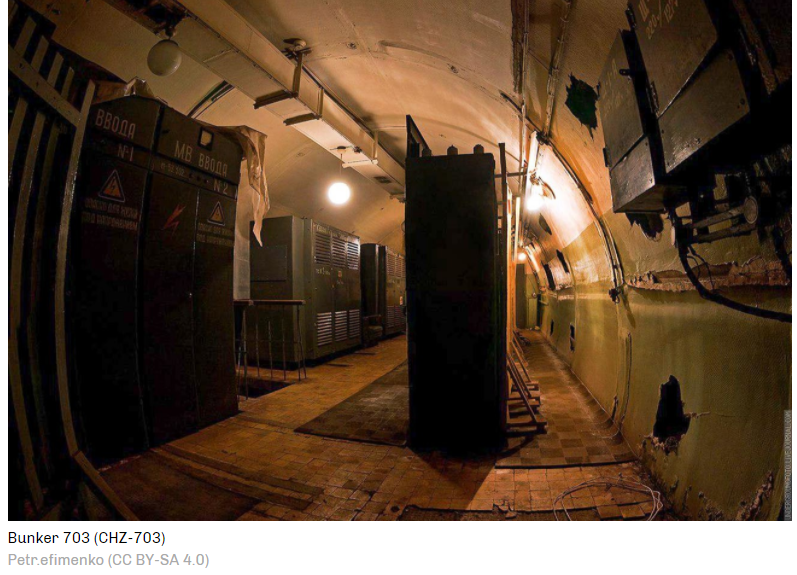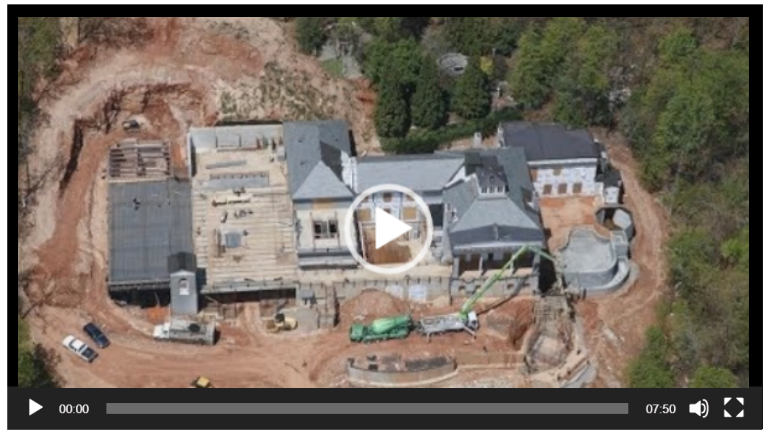American Media Group Telegram Channel. Everything You Need To Know! Find the latest AMG-NEWS breaking news, videos, pictures and latest updates HERE: https://t.me/AMGNEWS2022

For centuries, Russia has considered the Crimean peninsula a strategic asset for projecting power across the Black Sea to Turkey and beyond. The peninsula is littered with military installations, old and new.
President Putin wants control of Crimea for the Secret Underground Submarine Base?
What experiments were conducted during the Cold War?
Nuclear testing. Warheads, missiles, torpedoes. Military experiments.
One of the most top-secret places in USSR can be remembered for it’s extremely famous Nuclear Submarine Base.
One these bases happened to be located in Balaklava, Ukraine.
This city became the home of a huge underground submarine base which housed amazing docks and was functional up until 1996 when the last Russian submarine left Ukraine.
Object 825 GTS (or K-825) is an underground submarine base in Balaklava (near Sevastopol, Crimea), a secret military installation built in 1953-1961 during the Cold War, located in Balaklava Bay.

The object is a construction that has anti-nuclear defense of the first category (protection against direct hit of 100 kt nuclear bomb), which includes combined underground water channel with a dry dock, repair shops, fuel storages, torpedo arsenal. The base is located in the mountain Tavros on both sides of which there are two exits.
Attention: The US is Facing the BIGGEST Threat of The Century. . . Watch Video:
Object 825 GTS was built for hiding, repairing and maintenance submarines of 613th and 633rd projects as well as for the storage of ammunition for these submarines. The channel of the facility (length 602 meters) could accommodate seven submarines of these projects.




United States nuclear target map which shows potential nuke zones across the … submitted rough sketch called it a ‘root cellar’ or a ‘nuclear bunker’. Step-by-Step project for self-sufficiency: off grid bunker / root cellar – THIS IS A BIG STEP. Video Below:

About 120 thousand tons of rocks were removed during construction. The removal was made at night on barges under conditions of complete secrecy. The complex also included the repair and technical base (object 820), designed for the storage and maintenance of nuclear weapons. The temperature inside the base is about 15 degrees.






 This is ‘The Safest House in America’: How to Protect Yourself, Your Family, and Your Home. Video below:
This is ‘The Safest House in America’: How to Protect Yourself, Your Family, and Your Home. Video below:






Now Watch: The Underground War – FEMA Camps, Underground Military Bases, Bunkers and Tunnels Under the US For The ‘Elite’ and The New World Order:
Top 4 most interesting bunkers in Russia
A submarine base, the secret archives of the Ministry of Foreign Affairs, Stalin’s personal air raid shelters… We take a look at Russia’s most secret bunkers that even locals had no clue about.
1. Stalin’s bunker in Samara

Declassified only in 1990, this bunker began being built in the fall of 1941 during the Great Patriotic War. The secret facility, located under the modern-day Academy of Culture and Arts (previously housing the Regional Committee of the CPSU), was built primarily to evacuate Stalin in case of emergency, or, as stated in the corresponding State Defense Committee resolution, “according to the situation.”
The bunker was constructed by 2,900 workers and around 800 engineers, each of whom signed a non-disclosure agreement that lasted to the grave; not even locals knew what was being built at night behind the fence. The builders worked in two shifts, many sleeping in the underground rooms of the bunker itself. It is not known when it was finally completed—some say it became operational in 1941, others as late as January 1943.
► Watch Now: Does History Really Repeat Itself? A Superfood That Saved Leningrad During Its Lengthy Siege of World War II. Video below:
It is also unknown whether Stalin himself actually went there. In any case, he would have been impressed by its scale. The bunker is 37m deep (the height of a 12-storey building), and the committee room alone can comfortably accommodate up to 115 people.
Today there are guided tours of the facility, including the shaft and Stalin’s private office.
2.Bunker 703 of the Soviet Foreign Ministry in Moscow

On the surface, this top-secret facility, declassified only in 2018, looks like an inconspicuous gray building in the backstreets of Moscow, flanked by a kindergarten and a church. In the late 1940s, the Circle line of the Moscow Metro was built over the site of the future bunker. When the line was commissioned, various passageways and technical tunnels remained, and these were used as the basis for the bunker, which was completed by 1961.
For decades, the facility served as a secret archive for the Soviet Ministry of Foreign Affairs, where all kinds of documents were stored on endless shelves. The emergency exit led straight into the subway.
Also: Run For The Hills! Bunkers For The Elites Hiding From Judgement Won’t Hide Them. . .
In 2005, it started to leak due to lack of maintenance. The documents were removed, and plans were made to reconstruct the building, but the now Russian Foreign Ministry realized that it no longer needed the space. In 2018, the facility was handed over to a war veteran organization, which converted it into the country’s first fortification museum, whose main exhibits are models of protective structures and declassified documents detailing the creation of the first Soviet bunkers.
3. Bunker 42

Construction of a command post for the Air Force General Staff in the event of a nuclear strike began in Moscow’s Tagansky District in 1947 on Stalin’s orders. The facility was completed only in 1956, when Stalin was already dead. All the same, it was a momentous project, consisting of a vertical shaft 18 stores deep and spacious premises covering 7,000 sq. m.
► Exposed: The Darkest Secret of Trump’s Presidency. . .
The bunker was used for its intended purpose until 1986—from here the military commanded bombers with nuclear weapons on board. In 2006, a museum and restaurant were opened on the site. Now the once top-secret facility invites children and adults to view a simulated nuclear explosion and nuclear missile launch, and play themed quests.
4.Stalin’s shelter in Moscow

This bunker, which its palatial interior, was built in the 1930s when Uncle Joe was still very much alive. To conceal the Supreme Commander’s personal shelter, a 120,000-seat stadium and physical education complex were due to be built over it.
The stadium construction plans did not materialize, and by 1939 only the underground section of the structure was ready, which became Stalin’s reserve command post.
The command post consists of a domed conference hall, a small office and a Georgian-style dining room, and is connected to the Kremlin via a 17km underground road. Stalin himself was in the bunker only twice—to inspect the site in 1941 and in late November-early December that same year to direct operations during the Battle of Moscow. In 1996, a museum complex belonging to the Central Armed Forces Museum was opened on the bunker site.
America built a secret network of remote underground bunkers during “The Cold War” in case of nuclear strike by the Russia. But they were not made to protect civilians – the hideouts is just for Top Government Officials.
Related: Raven Rock: The Story of the U.S. Government’s Secret Plan to Save Itself – While the Rest of Us Die
Also: List of DUMBs by State – Complete List of Military Underground Bases in USA










![THE BIDEN ILLUSION: TRUMP DROPS CLASSIFIED PROOF DEEP STATE USED ACTORS, CLONES, AND HOLOGRAMS TO FAKE A PRESIDENCY [VIDEO]](https://amg-news.com/wp-content/uploads/2025/06/TRUMP-DROPS-CLASSIFIED-PROOF-DEEP-STATE-USED-ACTORS-CLONES-AND-HOLOGRAMS-TO-FAKE-A-PRESIDENCY-450x262.png)



